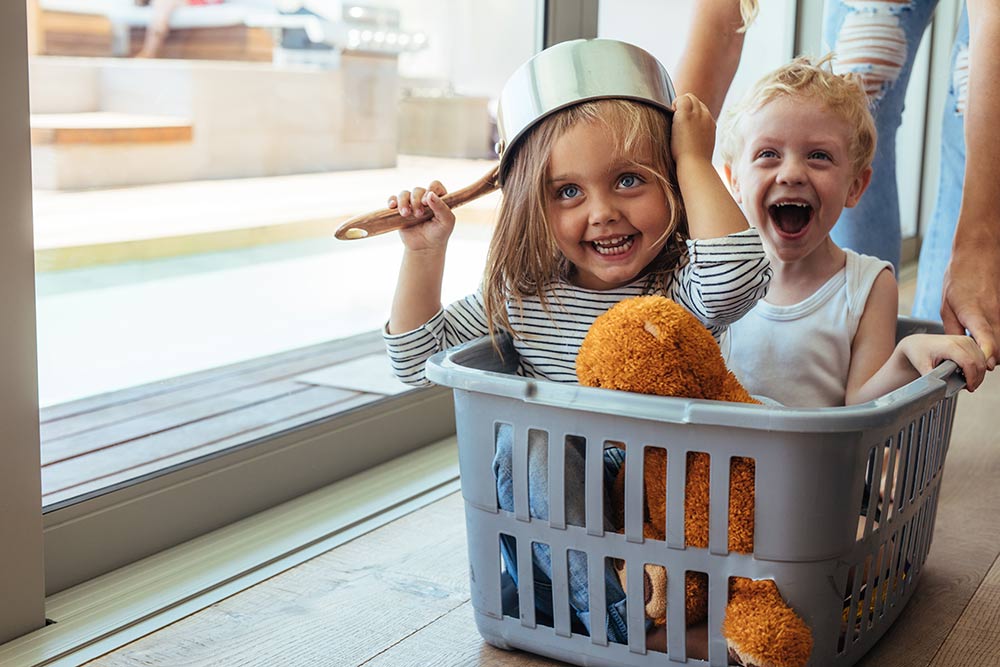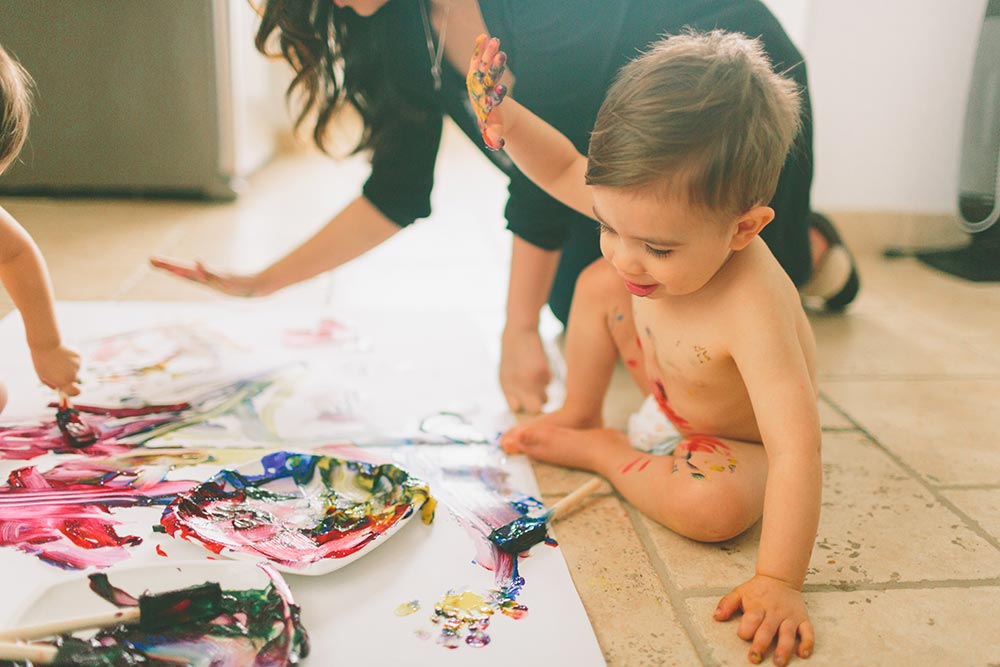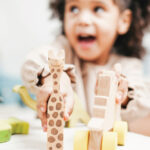Types of Play in Child Development

Play isn’t just about fun—it’s how kids build brains, bodies, and big feelings, one block tower or superhero adventure at a time.
Through play, children develop their understanding of the world while simultaneously growing and learning. Children need all kinds of play activities to develop properly because each one helps them grow, from block stacking to imaginative storytelling.
Play allows children to develop their social capabilities while learning how to solve problems and expand their creative thinking. All play activities contribute to the development of children’s emotional abilities while also expanding their cognitive understanding and physical coordination.
While each child progresses through development at their own unique rate, understanding different play stages helps you support their learning effectively. Moreover, understanding your child’s developmental stages enables you to effectively support their growth as they explore their surroundings or join group play activities.
The Stages of Play Development
Children experience developmental play changes from solitary exploration to interactive activities, which develop vital social skills and cognitive abilities while improving problem-solving skills. Children develop confidence through every stage of their learning journey.
Stage 1: Unoccupied Play (0–3 months)
What it looks like: Babies move their arms, legs, and hands seemingly at random. They might wiggle their fingers, kick their feet, or follow moving objects with their eyes.
Why it matters: This kind of play looks unstructured but represents the first stage of sensory exploration. Through movement exploration, infants learn about their body functions while developing fundamental motor abilities and discovering their environment. The initial small movements that children exhibit serve as a foundation for their future learning abilities and coordination skills.
Stage 2: Solitary Play (0–2 years)
What it looks like: While playing, children concentrate solely on their toys and show little regard for their surroundings. Younger children who play on their own demonstrate independence by stacking blocks and pushing toy cars, and flipping through picture books.
Why it matters: Independent play helps children develop focus, creativity, and self-sufficiency.
Stage 3: Onlooker Play (2 years +)
What it looks like: Some young children remain observers while others participate in activities. While children watch others play they might stand close by to observe interactions and ask questions or laugh with the group, but they do not join in the play.
Why it matters: Socialization-skills development primarily occurs during this significant stage. Children develop their play understanding through observation of others while they absorb social norms and learn communication patterns and group dynamics. This stage introduces children to cooperative play while removing the need for them to participate right away.
Stage 4: Parallel Play (2–3 years)
What it looks like: Children will play next to each other with blocks or dolls while maintaining separate activities without social interaction. They remain absorbed in their tasks while maintaining awareness of their companions.
Why it matters: Parallel play represents the beginning stage of developing interactive social skills among toddlers. This stage teaches toddlers to feel at ease in group environments while building up skills needed for later teamwork activities. During this phase children acquire boundary awareness, patience development and observation abilities that assist them in moving towards interactive play forms.
Stage 5: Associative Play (3–4 years)
What it looks like: Children engage with one another through conversation and playtime without following any established guidelines or collective objective. Children exchange toys and offer observations about each other’s actions as well as mimic each other’s activities with little precision.
Why it matters: This stage promotes communication, sharing, and cooperation. Young children begin developing friendships while learning fundamental social interaction skills including negotiation and turn-taking. During individual play activities, children start to develop an awareness of group behavior and pretend play systems.
Stage 6: Cooperative Play (4+ years)
What it looks like: During cooperative play at four years and older, children combine efforts to reach mutual objectives through activities such as constructing a fort or playing pretend house games, and setting up rule-based games. The children share information between each other to assign tasks and work together toward reaching their goal.
Why it matters: Through cooperative play, children develop essential skills in teamwork alongside problem-solving abilities and emotional self-control. Children develop skills for reaching agreements and resolving disputes while working together to achieve shared objectives. At this development phase children begin building stronger friendships while grasping social responsibilities, which equips them for group tasks both in school and future social settings.
Distinct types of play each contribute to different aspects of child development, like social confidence, emotional resilience, and cognitive growth.
Other Important Types of Play
While the stages of play development follow a natural progression as children grow, there are also other types of play that are essential for overall development. These aren’t tied to a specific age range, but continue to shape a child’s physical, cognitive, and emotional skills throughout childhood.
Understanding these additional play types can help parents and caregivers encourage well-rounded growth and create enriching play experiences.
Physical Play
What it looks like: Running, climbing, jumping, dancing, playing tag, or engaging in sports.
Why it matters: Physical play is critical for developing gross motor skills, coordination, and strength. It also promotes heart health, flexibility, and endurance, helping children develop a lifelong appreciation for movement and exercise. Beyond the physical benefits, active play is a powerful way to release energy and support emotional regulation, reducing stress and improving focus.
Encouraging outdoor play, playground activities, or simple movement games at home can help children build confidence in their physical abilities while staying active.
Constructive Play
What it looks like: Building with blocks, assembling puzzles, crafting with playdough, or creating art projects.
Why it matters: Constructive play develops problem-solving abilities while enhancing creativity and spatial understanding. Through object manipulation children explore cause-and-effect relationships while testing their ideas and improving their fine motor skills.
Through activities such as tower building with blocks, creating LEGO structures, or texture painting, students develop critical thinking and innovative skills which become beneficial for academic success.
Dramatic / Imaginative Play
What it looks like: Pretending to be a doctor, superhero, or chef; playing dress-up; acting out stories with dolls or action figures.
Why it matters: Children need imaginative play because it supports their emotional growth and helps them build communication skills and social awareness. Through imaginative play, children discover various viewpoints while expressing feelings and testing problem-solving methods through highly creative activities.
Pretend play enables kids to build their language abilities together with storytelling capabilities and emotional intelligence. Children build empathy, confidence, and self-expression skills as they act as restaurant owners, superheroes saving the world, or veterinarians caring for stuffed animals.
Rules-Based Play
What it looks like: Playing board games, card games, or structured playground games like Simon Says or Red Light, Green Light.
Why it matters: Children learn about fairness and develop patience through cooperation and strategic thinking during rules-based play. They learn to obey instructions, and demonstrate fair play. These skills become fundamental in upcoming educational environments and social exchanges.
Games with rules also strengthen cognitive skills like memory, logic, and planning, encouraging kids to think ahead and make decisions. Simple board games, matching games, and family-friendly competitions offer valuable problem-solving and teamwork lessons.
The Importance of These Play Types
Each one adds a new layer to a child’s development, whether they are strengthening muscles through physical play, building creativity with constructive play, exploring emotions through imaginative play, or learning patience with rules-based games. Every moment of play shapes essential life skills.
By encouraging a mix of active, creative, and structured play, caregivers can help children develop into well-rounded, confident, and socially capable individuals—all while having fun.

How to Support Your Child’s Play Development
Through meaningful play experiences, you can help children learn, while supporting their cognitive development along with their social and emotional growth. An environment that promotes curiosity alongside problem-solving and creativity permits children to immerse themselves in various play activities at their preferred speed.
Here’s how to support your child’s play development and make the most of these critical learning milestones.
Provide Open-Ended Toys That Encourage Exploration
Toys that enable children to use their imagination and try different things serve as the most effective toys. Open-ended toys give little ones the freedom to explore their imaginations and solve problems while creating, without focusing on specific results.
Great open-ended toys include:
- Building Blocks & LEGOs: Encourage spatial awareness, creativity, and motor skills.
- Dolls & Action Figures: Support imaginative play and role-playing social interactions.
- Playdough & Art Supplies: Inspire creativity and fine motor skill development.
- Loose Parts (rocks, shells, fabric, wooden pieces): Promote open-ended construction and problem-solving.
By offering versatile materials, kids can use them in new and creative ways, strengthening critical thinking skills and independent play habits.
Allow for Both Structured and Free Play
Children achieve better growth through a combination of structured play activities that follow specific guidelines, and free play where children explore independently.
Different types of play contribute to unique areas of child development.
- Structured play (board games, sports, group activities) teaches rules, cooperation, and goal-setting.
- Free play (building forts, pretend play, exploring outdoors) enhances creativity, self-regulation, and decision-making.
Join In! Playing Together Strengthens Bonds
Playing with your child helps build emotional bonds and allows you to demonstrate social behaviors while independent play remains beneficial.
Ways to play together:
- Let your child direct the activity during both pretend play and art projects.
- Encourage your child’s imagination by asking questions that require elaborate answers like, “How does your story continue?” or “What else could we build?” to spark deeper thinking.
- Build towers together, embrace silliness by engaging in role-play, and create new games to increase fun engagement.
- Spend 10–15 minutes daily on interactive play to promote social development and confidence, and create enduring memories.
Create a Play-Friendly Environment
A well-organized, engaging play space makes it easier for kids to focus, explore, and transition between activities.
Tips for a play-friendly home:
- Designate a play area: Even a small corner with toy bins, books, and building materials can inspire creativity.
- Make materials accessible: Store toys in labeled bins or low shelves so children can easily find (and put away!) items.
- Encourage outdoor play: Whether it’s a backyard, park, or nature trail, outdoor exploration promotes physical play and discovery.
Creating an organized, welcoming space makes it easier for kids to engage deeply in different forms of play and develop independence in managing their activities.
By providing the right toys, balance, and environment, caregivers support learning through play—setting the foundation for a child’s lifelong growth.









